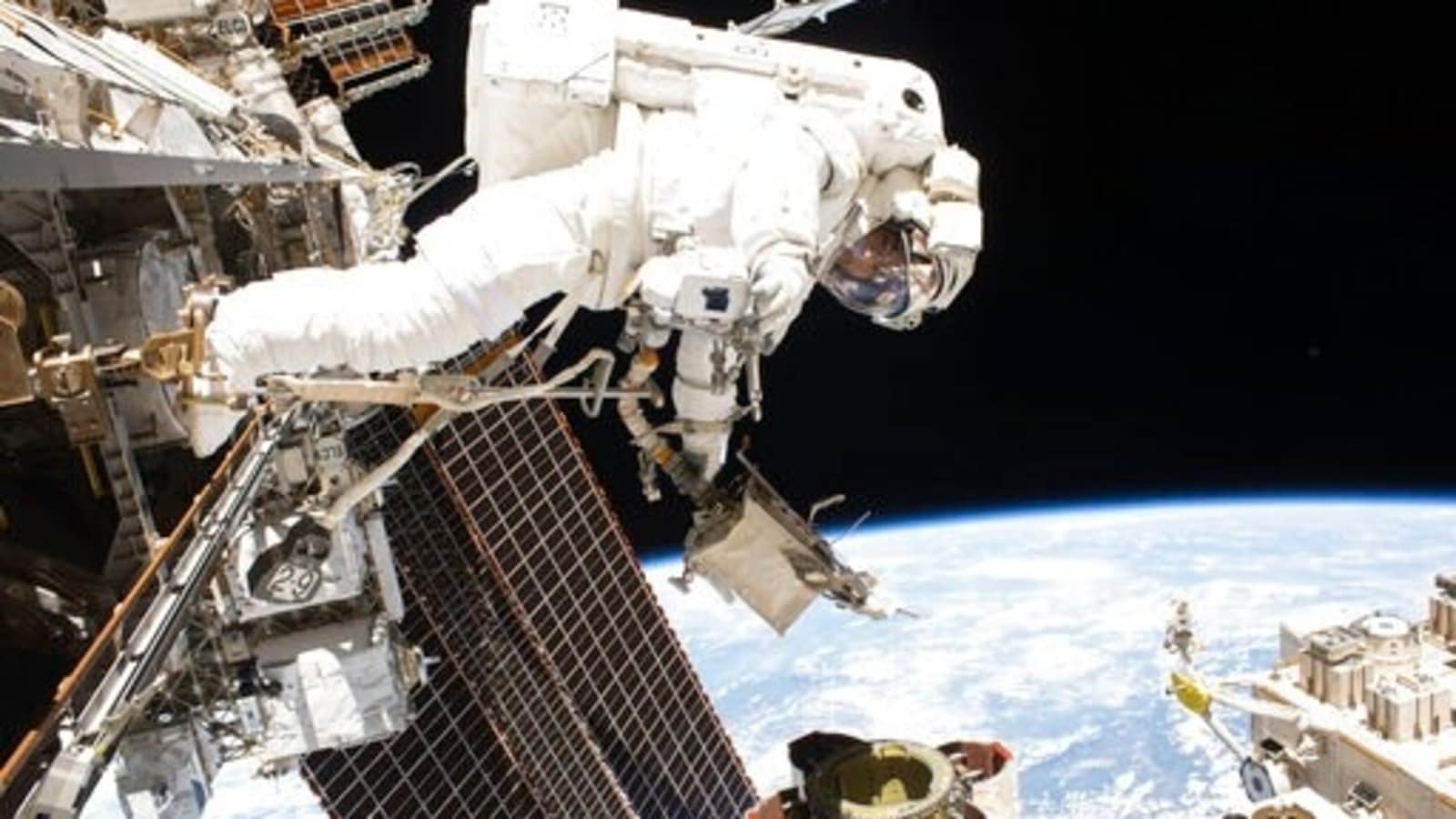If a US Astronaut Gets Stranded, not NASA, rescue will depend on SpaceX, Virgin Galactic, Blue Origin
NASA has no more shuttles to send. But SpaceX, Virgin Galactic and Blue Origin do.
Russia insists that it’s going to bring the U.S. astronaut home. The rest is just warmongering rumor. Mark Vande Hei, who’s about to break the American record for longest time in orbit, will depart the International Space Station as scheduled on aboard a Soyuz spacecraft on March 30 and land in Kazakhstan, whence NASA will fly him to U.S. soil.
Let’s assume this is true. Let’s believe Dimitry Rogozin, head of the Russian space agency Roscosmos, who now says he was only joking when he posted a video suggesting that Vande Hei would be left behind.(1) Let’s assume that Russian President Vladimir Putin, who has not recently shown the slightest respect for international law, will behave sensibly in this instance. Even if Vande Hei returns safely, the volume of space travel is growing. Sooner or later, someone will wind up stranded.
If that happens, there’s a better chance than ever that humankind can mount a successful rescue.
First things first: To refuse to help a stranded astronaut would constitute a grave violation of international law — more specifically, of the law of outer space. The 1967 Outer Space Treaty and the 1968 Rescue and Return Agreement obligate parties to treat each other’s astronauts not as foreign nationals but as “envoys of mankind.” Parties, which include the U.S. and Russia, must assist those facing emergencies and facilitate their safe return to their own countries. And if parties must help in emergencies, they certainly can’t cause the emergency in the first place, as would happen if the Soyuz refused to let Vande Hei board. Nevertheless, with regular flights to the ISS, and space tourism growing, the issue of someone being left behind in space isn’t going to disappear.
In fact, the likelihood is growing. In a few years, NASA will stop periodically boosting the ISS to maintain its orbit and allow it to burn up in the atmosphere. In its place, several private companies (along with India and China) expect to build space stations. NASA plans to use them as jumping-off points to send piloted missions to the Moon and Mars.
And perhaps beyond.
In short, between the commercial tourists, the space station crews, and, before too long, the private mining teams, there will soon be an awful lot of people up there. If a group gets stuck, we Earthlings will have to go get them.
The prospect of a mission to recover stranded space travelers evokes the can-do glitter of “hard” science fiction. Yet if the prospect is sci-fi, it’s less “The Martian” — a team of brilliant government scientists firing off government rockets — than it is “The Man Who Sold the Moon” — Robert Heinlein’s prescient 1950 novella about space travel developed by private industry rather than government.
Why? Because the last space shuttle retired in 2011. Even if NASA possesses the capacity to launch a rescue vehicle, NASA possesses no vehicle to launch.
On the other hand, in addition to the Russian Soyuz and a few other government-owned spacecraft, there exist private vehicles galore. Virgin Galactic, Blue Origin and Space-X all made flights to outer space last year. Boeing is pressing ahead with its Starliner program, although nobody can quite say when the much-delayed capsule will be ready. Plenty of other companies plan to get into the business. (Not, alas, Pan Am.) In short, should anyone wind up stranded, whether by accident or on purpose, more options exist today than ever before.
Critics complain that space tourism is only for the uber-rich and is bad for the environment. Maybe so. But it’s not the fault of private industry that the U.S. is on the verge of abandoning space. And if we’re going to keep sending people up there — and I hope we are — more rescue options are better than fewer.
Again, consider the current moment. When Rogozin posted his video suggesting that Vande Hei might be left on the ISS, Elon Musk responded that the Dragon Crew vehicle used by Space-X could swiftly be ready to go. When the U.S. announced plans to sanction Roscosmos, the ever-chatty Rogozin was swift to troll President Biden on Twitter: “If you block cooperation with us, who will save the ISS from uncontrolled deorbiting and falling into the United States or Europe?” The answer to Rogozin’s mocking question is: anybody who docks there. A spacecraft from any private vendor bringing people or supplies could easily carry enough extra fuel to give the space station a boost as needed.
I’ve long worried that we’ve lost our ability to gaze at the cosmos and lose ourselves in wonder. Our addiction to screens trains us to look down rather than up. If not for the war, I suspect that few Americans would even be aware of the record Vande Hei is about to break. His heroism in the cause of science and exploration, if noticed at all, would have been swiftly forgotten.
We shouldn’t wait for tragedy to celebrate the joy of exploration. And although it feels strange to type these words, as the government retreats from regular space travel I’m grateful that private industry is filling the gap.
(1) When Rogozin responded to international sanctions by promising that his agency would walk away from commitments to launch European vehicles from Equitorial Guinea, he turned out not to be joking.
Stephen L. Carter is a Bloomberg Opinion columnist. He is a professor of law at Yale University and was a clerk to U.S. Supreme Court Justice Thurgood Marshall. His novels include “The Emperor of Ocean Park,” and his latest nonfiction book is “Invisible: The Forgotten Story of the Black Woman Lawyer Who Took Down America’s Most Powerful Mobster.”
For all the latest Technology News Click Here

